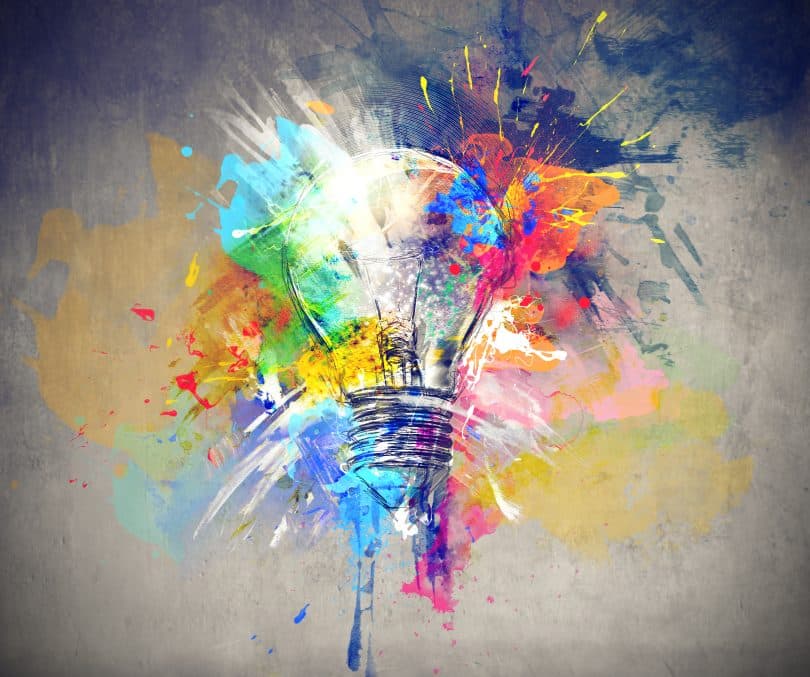What are the mechanisms of psychedelics? How did indigenous people discover the plant cocktails that produce psychedelic effects? Are the hallucinations that psychedelics produce real? How can psychology harness those applications to benefit patients? These are just some of the questions that Dr. Dennis McKenna PhD explores in this podcast with Dr. Jordan Peterson. Dr. Mckenna is an ethnopharmacologist, researcher and author. He’s also the brother of famous psychedelics advocate, Terrence McKenna.
What is Ethnopharmacology?
The work that Dr. McKenna is best known for is his research into ethnopharmacology. He defines ethnopharmacology as the “interdisciplinary scientific investigation of biologically active substances used or observed by humans in traditional societies.” He highlights that this investigation is not confined to plants or the study of medicines, but includes anything that contains “biologically active substances.” He gives the example of arrow poisons or fish poisons used by indigenous people.
“Ethno” specifically refers to the study of traditional people, and the research of pharmacology in this context aims to collate the knowledge of pre-scientific communities in order to preserve their unique medicinal cultures. As Dr. McKenna points out, indigenous people are “ingenious” at discovering these botanical elements in the biome and putting them to good use. However, today, the ongoing loss of habitats and species along with climate change, are contributing to the loss of this knowledge at a rapid rate.
In 2018, Dr. McKenna founded the McKenna Academy with the specific goal of preserving this knowledge, and being a bridge between traditional practices and modern science in order to foster a greater understanding of “nature, consciousness, the cosmos and their interweaving with humanity.” Dr. McKenna is involved with many projects, but his current focus is creating an online digital library of plant species in Peru, which will be an invaluable resource for future generations.
What is Ayahuasca?
Dr. McKenna has spent more than 40 years studying ayahuasca. In fact, the focus of his PhD at the University of British Colombia was ayahuasca, the chemistry, botanical sources and traditional uses of the plant, as well as comparative analysis with another plant containing dimethyltryptamine, or DMT, the plant’s active ingredient. DMT is a psychedelic compound found in the human body and at least 60 plant species worldwide. Terrence McKenna referred to DMT as “the most powerful hallucinogen known to man and science.”
What makes DMT unusual, according to Dr. McKenna, is that it’s not orally active by itself due to enzymes in the gut that inactivate it. But what indigenous people discovered was that if the plant is mixed with other plants containing beta carbolines, which inhibit the activity of the enzymes, the psychedelic effect of the plant is more powerful. The main plant ingredient in ayahuasca is the stem and bark of the tropical liana Banisteriopsis caapi mixed with the leaves of the chagropanga plant, which act as the inhibitor. The plants are stewed to make a sort of herbal tea. Ayahuasca is also known as caapi or yagé.

DMT can be consumed by smoking or vaping, which circumvents the gut enzymes to produce a short – about 20 minutes – and intense effect. While this effect can be a profound experience, it’s not long enough to create any impactful change in perspectives on life. However, by adding the beta carboline ingredient, the psychedelic effects are prolonged, and can last up to 7 hours, enabling a person to remain far longer in an altered consciousness, with far more room to explore any information uncovered by that state.
How did indigenous people discover this cocktail out of the more than 80,000 species that exist in the Amazon? This is a question that comes up often, and Dr. McKenna has an answer, thanks to the work of one of his colleagues who discovered the presence of beer-making cultures in the north of the Amazon about 1,000 years ago. In the same way that craft-brewers today experiment with an array of ingredients, so too did these people, and by experimenting with that plants available to them, they stumbled upon the formulation that we know today as ayahuasca.
Are Hallucinations Real?
In experiments with DMT, the psychiatrist Rick Strassman, author of The Spirit Molecule (2000), recorded the experiences of people who reported encounters with alien entities. When Strassman suggested to these people that the encounters were mere dreams, the study participants claimed the experiences were “more real than life itself” – according to Dr. Peterson.
We appreciate you joining us. Sign up for the Cannadelics Weekly Newsletter to get updates direct to your email; and for sweet offers on cannabis flowers, vapes, edibles, smoking equipment, cannabinoid compounds, and even some psychedelics. Everyone get stoned responsibly!
Drawing on the work of other researchers, Dr. Peterson posits that the psyche is divided into two frameworks: one that determines life values, and another that takes care of day-to-day decision-making, as influenced by those over-arching life values. He suggests that hallucinations can result in a shift in perspective by causing entropy in the framework that determines life values, in effect, “loosening the constraints on fundamental presuppositions” about life.
This idea that psychedelics have an entropic effect on the brain by temporarily disabling “the default mode network” comes from the work of another researcher, Professor Robin Carhatt-Harris, who introduced the concept in 2014. Dr. McKenna concurs with this hypothesis, citing the neuroplasticity of the psychedelic effect. He refers to the over-arching framework as “the Reality Hallucination,” which in his opinion, is the reality that we inhabit, a sort of “model reality” that allows us to navigate our lives.
In this instance, he explains, the function of the brain is to act as a gatekeeper, by keeping out extraneous information that’s not essential. If the brain did not provide this function, we’d be overwhelmed by information to the point of dysfunction. However, people can get trapped in their default mode network or reality hallucination, resulting in conditions such as addiction or PTSD. But psychedelics throw the gates open, flooding the brain with new information that’s not normally accessible.
Can We Trust the Psychedelic Experience?
This creates possible therapeutic benefits, by allowing a person to step outside of their normal frame of reference, and gain insights into psychological conditions such as trauma or addiction. This happens due to the ability of psychedelics to activate changes in neural architecture, also known as neuro-plasticity. Dr. McKenna compares the action of psychedelics on the brain to the act of rebooting a computer. Once the computer is shut down, extraneous information is purged and the computer works more efficiently. This is the “psychedelic promise,” its ability to reconstruct the function of the default mode network in an optimal way.
Dr. McKenna points out that there is still a lot to learn about psychedelics, both in terms of how they work and their effect on the brain. For now, what we’re mostly dealing with are hypothesis. However, what is known is that psychedelics produce an increase in trait openness, which is the trait associated with creativity. Therefore, it’s possible to say that psychedelics put people into a more creative state, and the effect of a creative state is that it’s possible to see things from new perspectives.
Dreams are products of our creativity or imagination, and there are parallels with the psychedelic experience insofar as the entities encountered under psychedelics are also products of the imagination. Or are they? Do they come from the imagination or somewhere else, for example, an astral plain that can only be accessed via psychedelics? This is a question that researchers have been asking about psychedelics forever.

It’s a question that Dr. McKenna has heard often: are the entities experienced under psychedelics real? His answer is prosaic: “define real?” he says, and adds a caveat: anything that can be experienced is real. However, he can’t know where the entities come from and is slow to talk about it, as it leads to an “epistemological nightmare.” To his mind, what psychedelics do is breakdown the artificial boundaries between dimensions, teaching us that it’s “all one.” Therefore, any effort to single out individual elements leads to a zero sum game.
FINAL THOUGHTS
Dr. McKenna says more practical questions to ask are: Is the information that psychedelics transmit useful? Can we learn anything from it? Can it teach us something we might not otherwise know? He gives an anecdotal account of his brother’s use of mushrooms to provide an answer: Terrence would take high doses of mushrooms in the dark and enter into dialogues with entities, asking them if they were real. The entities replied that they didn’t care whether they were perceived as real or not.
Which brings the issue back to the question of how can we know anything is real? This mind-bending concept is just one of many covered in this fascinating podcast – which has already ranked more than 5 million views on Youtube – and is one everyone with an interest in psychedelics should watch. Other topics covered include Jungian archetypes, psychedelic rituals and bad shamans.
WATCH HERE:
Hello readers! We appreciate you stopping by Cannadelics.com; an independent news platform that specializes in cannabis and psychedelics reporting. Stop by regularly to stay informed on all happenings, and subscribe to the Cannadelics Weekly Newsletter, to ensure you’re never late to get the news.









